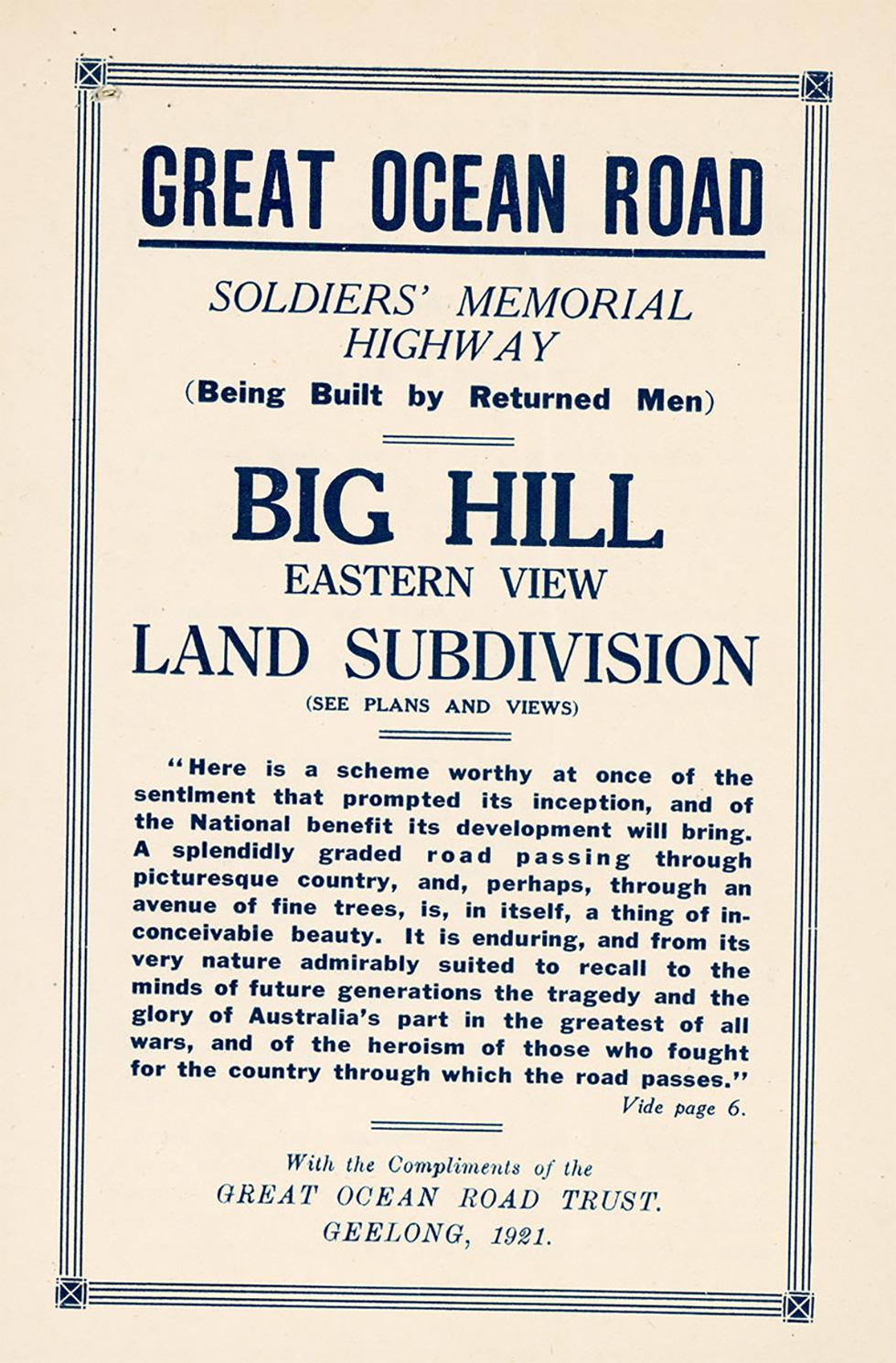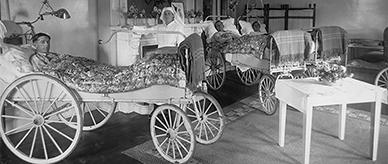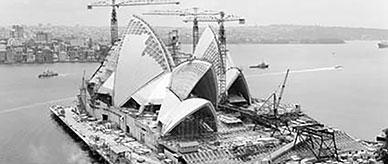


Transcript
[Main heading:] GREAT OCEAN ROAD
SOLDIERS’ MEMORIAL HIGHWAY
(Being Built by Returned Men)
[dividing line]
[Secondary heading: BIG HILL]
EASTERN VIEW
LAND SUBDIVISION
(SEE PLANS AND VIEWS)
[dividing line]
“Here is a scheme worthy at once of the sentiment that prompted its inception, and of the National benefit its development will bring. A splendidly graded road passing through picturesque country, and, perhaps, through an avenue of fine trees, is, in itself, a thing of inconceivable beauty. It is enduring, and from its very nature admirably suited to recall to the minds of future generations the tragedy and the glory of Australia’s part in the greatest of all wars, and of the heroism of those who fought for the country through which the road passes.”
Vide page 6.
[dividing line]
With the Compliments of the
GREAT OCEAN ROAD TRUST.
GEELONG, 1921.
About this record
The Great Ocean Road in Victoria was built to provide returned soldiers with work and was paid for by public funds. Dedicated to the fallen, it became a form of war memorial. At 242 kilometres long, its construction continued from 1919 to 1932. Over 3000 returned servicemen endured harsh living and working conditions to complete the project. The Great Ocean Road was added to the Australian National Heritage List in 2011 in recognition of its historic and natural significance.
Related themes
Need help with your research?
Learn how to interpret primary sources, use our collection and more.


